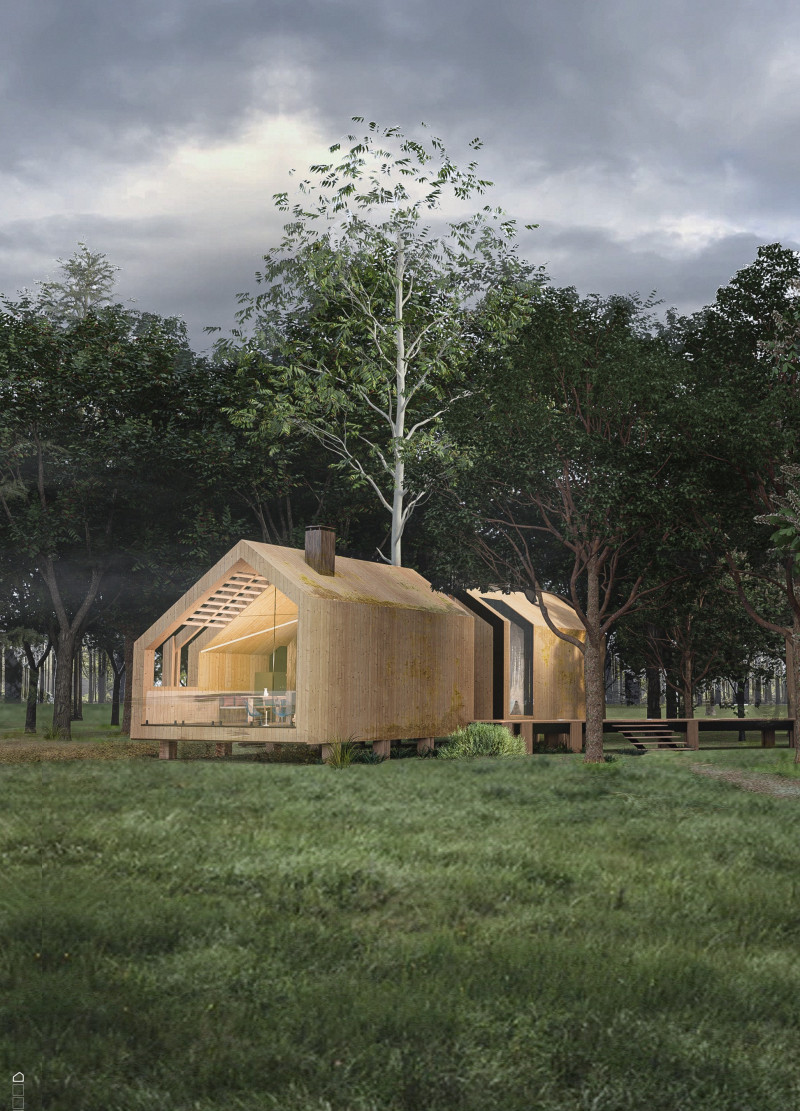5 key facts about this project
The DOOD - Traditional Māori House is situated in New Zealand, designed to create a strong bond between its occupants and the surrounding nature. This space encourages relaxation and self-discovery. Drawing from Māori cultural heritage, the design emphasizes connection to the environment while maintaining a modern sensibility.
Spatial Organization
The layout of the house features several important areas, including spaces for sleeping, eating, meditating, and bathing. Central to the design is a tree that serves as the focal point around which all other areas are arranged. This choice highlights the significance of nature and reinforces the idea that the outdoors is essential to human well-being. Each area flows into the next, creating a natural sense of movement throughout the cabin.
Architectural Features
The gabled roof is a prominent aspect of the house, providing both functional and visual benefits. It supports natural airflow and creates a link between the indoor space and the sky. The design includes openings at both ends, allowing for effective cross ventilation and enhancing comfort. Sunlight is also thoughtfully considered, with part of the cabin extending beyond the forest. This design choice ensures that the interiors receive ample natural light throughout the day.
Material Considerations
Wood is the primary material used in construction, chosen for its sustainability and suitability for the environment. This choice reflects a commitment to reducing ecological impact while ensuring durability. The simplicity of using wood allows the design to blend naturally with its surroundings, respecting the local landscape and traditions.
Functional Elements
Practical components such as coat storage, benches, and a mudroom enhance the usability of the space. These features are integrated to support everyday activities, making the cabin both functional and inviting. The design pays careful attention to the needs of its users, ensuring comfort while maintaining a strong connection to the natural environment. The central tree not only anchors the structure but also symbolizes the relationship between the inhabitants and the land, making it an essential part of the overall experience.























































